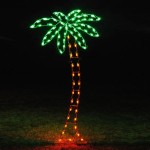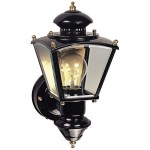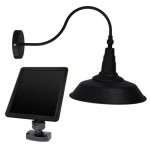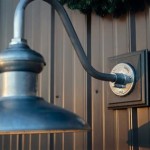Outdoor Building Accent Lighting: A Guide to Essential Aspects
Outdoor building accent lighting is an incredibly versatile and impactful method to highlight architectural features, enhance curb appeal, and create a captivating ambiance. By strategically placing lights, you can transform your outdoor space, creating a visually appealing and functional environment. Here's a comprehensive guide to the essential aspects of outdoor building accent lighting:
1. Purpose and Objectives
Before embarking on your lighting project, it's crucial to clearly define your objectives. Determine which architectural elements you want to accentuate, whether you aim to enhance security or ambiance, and the overall mood you wish to create. Understanding your goals will guide your lighting choices and placement.
2. Lighting Types and Fixtures
There's a plethora of lighting options available, including floodlights, spotlights, and uplighting. Floodlights provide broad illumination, while spotlights create focused beams. Uplighting washes walls and other vertical surfaces with light. Choose fixtures that complement the architectural style of your building and the desired effect.
3. Light Source Selection
LEDs (Light Emitting Diodes) offer several advantages: they are energy-efficient, durable, and provide a high-quality light output. Halogen and incandescent bulbs are traditional options, offering warm, inviting light but with higher energy consumption. Consider the color temperature of the light source to create the desired ambiance.
4. Beam Angle and Placement
The beam angle determines how wide or narrow the light spread is. Wider angles illuminate larger areas, while narrower angles produce more focused beams. Proper fixture placement ensures optimal illumination. Wall washers mount close to the wall for grazing light, while spotlights can be placed at a distance for emphasis.
5. Control and Dimming
Advanced lighting systems offer sophisticated control options, allowing you to dim or switch lights remotely. Dimmers provide flexibility, letting you adjust the light intensity to suit different occasions or create specific moods. Consider timers or motion sensors to automate lighting, enhancing security and convenience.
6. Energy Efficiency and Sustainability
Embrace energy-efficient lighting practices to reduce energy consumption and minimize environmental impact. Utilize LED fixtures, install dimmers, and consider solar-powered lighting solutions. By adopting sustainable lighting measures, you can enhance your outdoor aesthetics while promoting environmental responsibility.
7. Maintenance and Safety
Regular maintenance is essential to ensure optimal performance and longevity. Clean fixtures, replace bulbs as needed, and inspect wiring for any potential hazards. Prioritize safety by using weather-resistant fixtures, following electrical codes, and ensuring proper grounding. By adhering to these guidelines, you can maintain a safe and well-maintained outdoor building accent lighting system.
Outdoor building accent lighting is an effective way to elevate the visual appeal and functionality of your property. By considering the purpose, selecting appropriate lighting types and fixtures, and focusing on control, energy efficiency, maintenance, and safety, you can create an outdoor space that is both welcoming and captivating.

10 Great Outdoor Lighting Ideas To Make Your Yard Dazzle And Delight Agsstainless Com

Commercial Business Led Lighting Systems North Ina Lkn Lights

Your Home Can Stand Out With Exterior Accent Lighting Teague Electric

An Architect S Guide To Outdoor Lighting Architizer Journal

Accent Lighting Outdoor Soffit Can Lights Trimlight

Exterior Facade Light Inground Uplight

Haven Smart Outdoor Led Lighting Solutions Exterior Home Lights

Commercial Landscape Lighting Buck Sons
A Guide To Outdoor Lighting Design Rtf Rethinking The Future
%20(1).jpg?strip=all)
Outdoor Lighting Techniques







